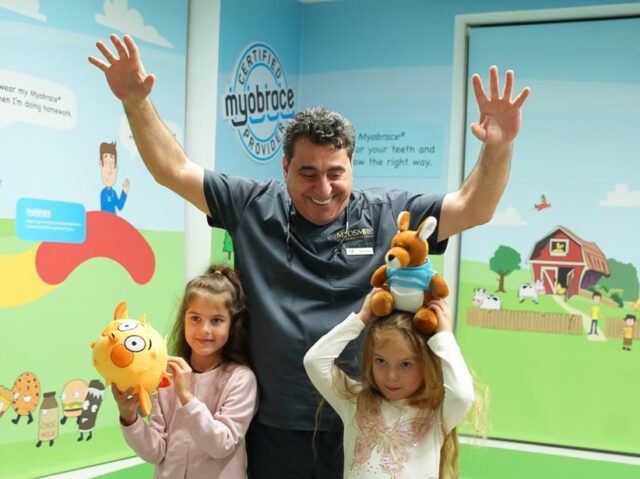Soft Tissue Dysfunction and Mouth Breathing: The Hidden Chain Reaction Affecting Your Child’s Health and Learning
When parents think of crooked teeth or enlarged tonsils, they rarely connect these issues with how their child breathes or how their tongue rests. Yet, soft tissue dysfunction — involving the tongue, lips, and facial muscles — can set off a cascade of developmental problems that impact far more than just a child’s smile.
At Vilafortuny Dental and Medical Centre in Dubai, we take a holistic, airway-focused approach to early childhood development. Our specialists are trained to identify and treat myofunctional disorders that often go unnoticed — but which can significantly affect breathing, sleep, speech, facial growth, and even academic performance.
What Is Soft Tissue Dysfunction?
Soft tissue dysfunction refers to abnormal function or tone in the oral and facial muscles — especially the tongue, lips, and cheeks. This dysfunction often presents as:
- Low or incorrect tongue posture
- Mouth breathing (instead of nasal breathing)
- Difficulty swallowing correctly
- Improper resting position of the lips
- Weakness in the facial muscles
These issues might seem minor, but they can trigger a domino effect in your child’s health and development.
From Soft Tissue Dysfunction to Mouth Breathing
The tongue plays a critical role in shaping the upper jaw and supporting nasal breathing. When it rests low in the mouth (instead of against the palate), it can narrow the airway and make nose breathing difficult. As a result, children begin to breathe through their mouths — especially during sleep.
Mouth breathing may seem harmless at first, but over time, it disrupts the balance of facial growth and oxygen intake.
What Happens Next? The Downstream Effects
Once mouth breathing becomes habitual, it can lead to a range of structural and systemic issues
- Enlarged Adenoids and Tonsils
Chronic mouth breathing dries out the oral and pharyngeal tissues, triggering inflammation and enlargement of the adenoids and tonsils — often leading to further airway obstruction.
- Crooked or Crowded Teeth
When the tongue doesn’t rest in the correct position, the upper jaw doesn’t develop fully. This results in a narrow palate, dental crowding, and misalignment, which may later require braces or even jaw expansion.
- Poor Sleep Quality
Mouth breathing reduces oxygen saturation during sleep. This leads to frequent awakenings, restless sleep, and symptoms often mistaken for ADHD, such as hyperactivity, irritability, and lack of focus.
- Academic and Behavioural Struggles
Inadequate oxygen intake and poor-quality sleep can affect memory, focus, and emotional regulation. Studies show that children with untreated airway issues are more likely to struggle with concentration, reading comprehension, and classroom behaviour.

How Can Vilafortuny Help?
Our multidisciplinary team in Dubai includes airway dentists, myofunctional therapists, GPs, and hygienists who work together to uncover the root causes of these issues.
We provide:
- Comprehensive soft tissue and airway assessments
- Myofunctional therapy to retrain tongue posture and facial muscles
- Appliance therapy using Myobrace®, Myosa®, and trainers for natural jaw growth
- Referrals to ENT specialists when surgical evaluation is needed
- Parental guidance and long-term monitoring
All our treatment plans are non-invasive, child-friendly, and supported by advanced diagnostics, including 3D airway scans and digital smile design tools.
Early Detection Is Key
The earlier we identify and correct soft tissue dysfunction, the better the outcomes for your child. Intervention during the ages of 3 to 9 is especially effective, as this is when the face and jaws are still developing and habits can be changed more easily.
Concerned About Your Child’s Breathing or Teeth?
If your child is snoring, always breathing through their mouth, or showing signs of fatigue or learning difficulties, it may be time for an airway check-up.
Book a myofunctional and airway assessment at Vilafortuny in Dubai today.
Let’s address the root cause — not just the symptoms — and help your child breathe, sleep, and thrive.


